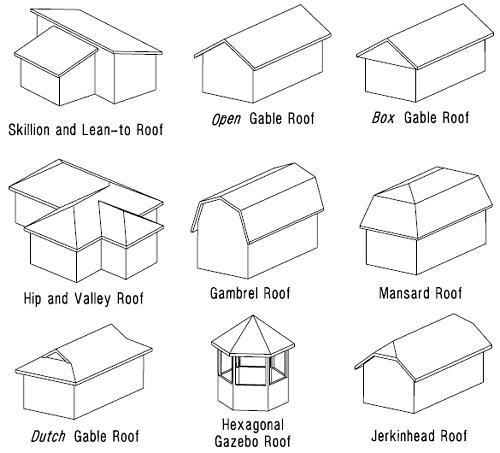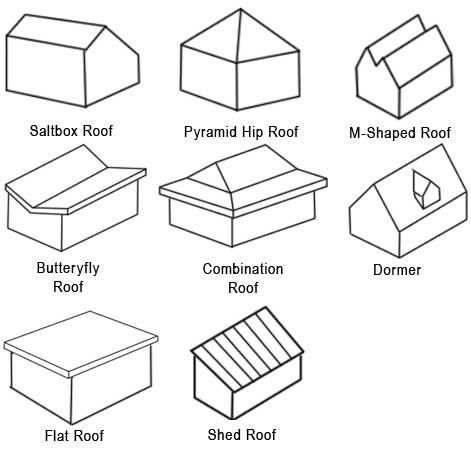Basic Considerations for Residential Roofing in Florida Part 1 of 3
Reading Time: 5 minutes
Roofing systems are an integral part of any new construction. There are a number of things to consider when selecting a new roof system. Of course, cost and durability head the list, but aesthetics and architectural style are important, too. The right roof materials and system for your home is one that balances these considerations. This is a three part blog that will discuss basic residential roofing considerations in Florida. Part I will discuss the basic components and types of roofs. Part II will discuss the “Enemies” of your roofing system. Part III will discuss considerations in selecting a roofing contractor.
All steep-slope roof systems (i.e., roofs with slopes of 25 percent or more) have five basic components
- Roof covering: shingles, tile, slate or metal and underlayment that protect the sheathing from weather.
- Sheathing: boards or sheet material that are fastened to roof trusses or rafters to cover a house or building.
- Roof structure: rafters and trusses constructed to support the sheathing.
- Flashing: sheet metal or other material installed into a roof system’s various joints and valleys to prevent water intrusion and seepage.
- Drainage: a roof system’s design features, such as shape, slope and layout that affect its ability to shed water.
It is very important that homeowners hire licensed roofing contractors to perform any work. Each different type of roof will have different installation requirements. Licensed contractors are tested and educated on these criteria and requirements. The Florida Building Code requires that flashings be used to direct water away from the interior of the structure and also require certain nailing patterns and lapping methods. A leaking roof can be evidence of a building code violation. At a bare minimum, a roof leak should be taken seriously and repaired immediately as prolonged moisture intrusion can lead to severe interior damage and mold intrusion. Below is a discussion on some different roofing materials.
Asphalt shingles possess an overwhelming share of the U.S. steep-slope roofing market and can be reinforced with organic or fiberglass materials. Asphalt shingles’ fire resistances, like most other roofing materials, are categorized by Class. A shingle’s reinforcement has little effect on its appearance. Organic and fiberglass products are available in laminated (architectural) grades that offer a textured appearance. Zinc or copper-coated ceramic granules also can be applied to organic or fiberglass products to protect against algae attack, a common problem in warm, humid parts of the United States, like Florida. Both types of shingles also are available in a variety of colors.
Regardless of their reinforcing type and appearance, asphalt shingles’ physical characteristics vary significantly. When installing asphalt shingles, the use of shingles that comply with American Society for Testing and Materials (ASTM) is very important. These standards govern the composition and physical properties of asphalt shingles; not all asphalt shingles on the market comply with these standards. If a shingle product complies with one of these standards, it is typically noted in the manufacturer’s product literature and on the package wrapper. Finally, asphalt shingles should nailed properly and their use should be reconsidered when in a location with a high probability for high winds and/or hurricanes.
Wood shingles and shakes are made from cedar, redwood, southern pine and other woods; their natural look is popular in the Northwest and parts of the Midwest. Wood shingles are machine sawn; shakes are handmade and rougher looking. A point to consider: Some local building codes limit the use of wood shingles and shakes because of concerns about fire resistance. Many wood shingles and shakes have low fire ratings or no ratings at all. However, higher fire ratings are available for certain wood shingle products that incorporate a factory-applied, fire-resistant treatment. In Florida, a general contractor and building contractor are only allowed to apply asphalt/wood shingles and shakes on new construction. All other roofs and all re-roofs must be performed by a certified roofing contractor.
Tile, Clay or Concrete is a durable and long lasting roofing material. Mission, Italiana and Spanish-style round-topped tiles are used widely in the Southwest and Florida, and flat styles also are available to create French and English looks. Tile is available in a variety of colors and finishes. Tile is heavy and has a longer life than shingles. If you are replacing another type of roof system with tile, you will need to verify that the structure can support the load of the tile roof. Tile roofs are also more expensive than their shingle counterparts.
Slate is mostly quarried in the Northeastern United States. It is available in different colors and grades, depending on its origin. Considered virtually indestructible, it is, however, more expensive than other roofing materials. In addition, its application requires special skill and experience. Many old homes, especially in the Northeast, still are protected by this long-lasting roofing material.
Metal primarily thought of as a low-slope roofing material, has been found to be a roofing alternative for home and building owners with steep-slope roofs. There are two types of metal roofing products: panels and shingles. Numerous metal panel shapes and configurations exist. Metal shingles typically are intended to simulate traditional roof coverings, such as wood shakes, shingles and tile. Apart from metal roofing’s longevity, metal shingles are relatively lightweight, have a greater resistance to adverse weather and can be aesthetically pleasing.
As important as the roofing material, the layout of the roof is a primary method of water management for the roofing system. Below are some drawings to illustrate different types of roof layouts.
Whether new construction, repair or re-roof, a fundamental understanding of the different types of roofing systems and materials is a must for all Florida residential property owners. Part II of this blog will discuss ventilation, insulation and many roofing “enemies”.



